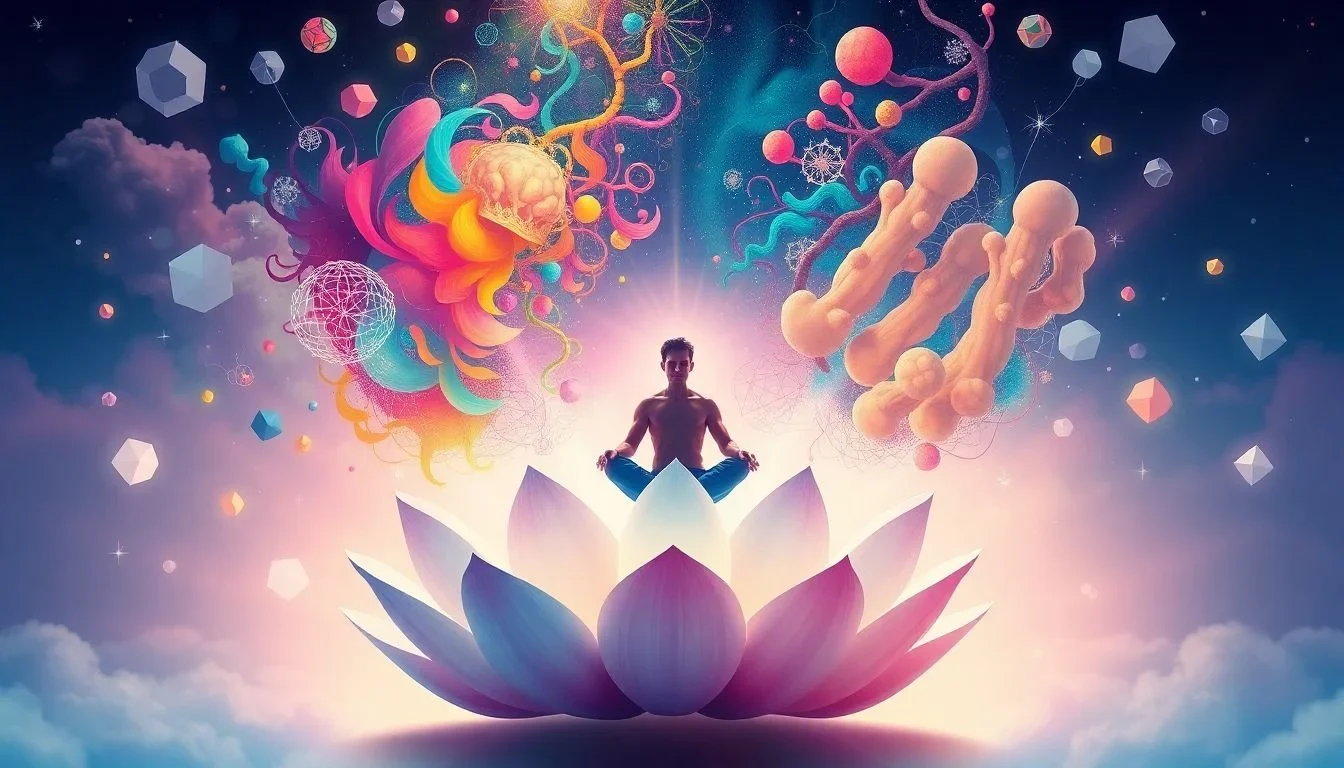Introduction
Yoga is often perceived as merely a practice of physical postures and stretches, but it encompasses a holistic approach that integrates the mind, body, and spirit. In a world that often feels chaotic and overwhelming, yoga serves as a vital tool for cultivating inner peace and mental tranquility. The phrase “stilling of the changing states of the mind” is rooted in ancient philosophical texts, particularly the Yoga Sutras of Patanjali, which emphasizes the importance of calming turbulent thoughts and emotions. This central concept has gained renewed relevance in today’s fast-paced society, where many people seek effective means to manage stress and discover lasting calm. By exploring this foundational concept, one can unlock benefits that extend beyond mere physical flexibility, resulting in profound mental clarity and emotional stability.
The Philosophy Behind Yoga as Mind Stilling
The origins of yoga trace back several millennia, with significant contributions from ancient Indian texts. The Yoga Sutras of Patanjali intricately describe the erratic nature of the human mind, which naturally tends to wander, leading to distraction and restlessness. Meanwhile, the Bhagavad Gita emphasizes the importance of controlling one’s thoughts as a means to achieve higher spiritual awareness and understanding. For the ancient yogis, achieving a serene mind was essential for attaining spiritual liberation, or moksha. They recognized that the fluctuations of thought could lead to suffering and that by calming the mind, one could access deeper layers of happiness and contentment.
The Concept of Chitta (Mind or Mind Stuff)
Central to the understanding of yoga’s effects on the mind is the concept of Chitta, which encompasses all aspects of mental activity. Analogously compared to a pond, Chitta can be disturbed by the ripples produced from every thought, feeling, and memory. The practice of yoga aims to cultivate stillness in this metaphorical pond, enabling practitioners to experience pure awareness and insight. When Chitta is quieted, individuals can perceive life with clarity, free from the distortions created by emotional turmoil. Ancient texts consistently emphasize that mastery over the mind leads to profound peace and understanding, forming the bedrock for spiritual advancement.
The Mind’s Changing States
Human consciousness traverses various states: wakefulness, dreaming, deep sleep, and a unique state known as Suriya, which transcends ordinary awareness. Yoga acknowledges and gently guides practitioners through these states, aiming to connect with a higher level of stillness that lies beyond the typical fluctuations of consciousness. In practices such as meditation, the objective is to quiet the mental chatter, achieving a state of serene alertness that allows one to delve into a deeper understanding of themselves and their surroundings. Transcending these states ultimately facilitates a deeper self-awareness and a more profound understanding of the complex nature of existence.
Scientific Perspectives on Yoga and Mindfulness
Contemporary scientific research substantiates the myriad benefits associated with yoga practice. Numerous studies have demonstrated that engaging in yoga can lead to a reduction in cortisol levels, the hormone primarily associated with stress. Additionally, yoga has been shown to enhance cognitive functions, allowing individuals to remain focused and clear-headed. People who practice yoga regularly also report improvements in the quality of their sleep—an essential factor often compromised by stress and anxiety. Individuals frequently note a decrease in symptoms of anxiety and depression following consistent yoga practice, highlighting its efficacy as a mental health tool.
Neuroplasticity and Brain Function
Emerging evidence suggests that yoga fosters changes in brain function and structure. Regular practitioners exhibit enhancements in areas of the brain associated with emotional regulation, specifically the prefrontal cortex, which governs decision-making and impulse control. Concurrently, there is a reduction in activity in the amygdala, a region that plays a crucial role in fear and stress responses. Neuroimaging studies reveal that individuals who incorporate yoga into their routine often exhibit stronger neural connections, which facilitate emotional resilience and a greater ability to manage challenging emotional states.
Expert Insights
Leading neuroscientists and psychologists consistently affirm that yoga can quiet the incessant chatter of the mind. Psychologists observe that it enhances resilience to stress and improves overall emotional well-being. Renowned organizations, such as the National Center for Complementary and Integrative Health (NCCIH), endorse yoga as a powerful practice for enhancing mental stability and emotional balance, supported by a robust body of empirical evidence.
Techniques in Yoga for Stillness of the Mind
Meditation and Mindfulness Practices
One of the most accessible yet profound techniques for calming the mind is meditation. Simply sitting in a quiet space and focusing on your breath can provide substantial benefits. For those new to meditation, dedicating just a few minutes daily to concentrate on each inhale and exhale can create a foundation for peace. Breathing exercises, known as pranayama, are particularly effective in slowing racing thoughts and helping one ground themselves in the present moment. Mindfulness, the practice of anchoring oneself to the present, helps to minimize mental distractions and fosters a sense of tranquility amidst external chaos.
Asanas and Body Awareness
The practice of asanas, or yoga postures, serves as a powerful means for anchoring the mind. Poses designed for relaxation, such as Shavasana (Corpse Pose) or Balasana (Child’s Pose), effectively soothe the nervous system and promote a state of calm. The pose Viparita Karani, also known as legs-up-the-wall, is particularly beneficial for alleviating mental agitation and promoting relaxation. When combined with conscious breathing, these movements heighten the sensations of peace and focus, allowing the body to relax and, consequently, enabling the mind to do the same.
Yogic Philosophy and Practice Integration
Integrating yogic philosophy into daily life through the principles known as yamas and niyamas (ethical guidelines) can enhance mental discipline and clarity. Practices such as mantra chanting, visualization, or affirmations deepen focus and prevent the mind from wandering, fostering mental stability. As thoughts begin to settle, practitioners often experience increased clarity and inner strength, empowering them to navigate life’s challenges more effectively.
Managing Stress and Anxiety
In moments of stress or anxiety, incorporating simple yoga breathing techniques or engaging in a quick yoga pose can be transformative. Many workplaces have started implementing short yoga sessions to help employees manage pressure and maintain focus. Techniques such as deep breathing and mindful walking are versatile practices that can be performed anywhere, enabling individuals to cope with stress in real time.
Enhancing Concentration and Mental Clarity
Individuals from various backgrounds, including students, athletes, and professionals, can significantly benefit from a daily yoga routine designed to enhance concentration and mental clarity. Regular practice can clear mental fog, sharpen focus, and establish a sense of purpose. Dedicating just ten minutes daily to meditation or gentle yoga stretches not only helps build long-term mental resilience but also uplifts mood and improves decision-making capabilities.
Long-term Benefits and Self-awareness
Engaging with yoga regularly transforms one’s relationship with thoughts and emotions. Many practitioners report a newfound awareness of their mental patterns, enabling them to achieve greater self-regulation and emotional intelligence. As individuals become more attuned to their internal states, they develop a deeper understanding of themselves, which leads to personal growth and a consistent state of well-being. Over time, this awareness fosters a more harmonious existence, enabling practitioners to navigate life’s complexities with greater ease and confidence.
Discover more from Healthinfo24.com
Subscribe to get the latest posts sent to your email.





Leave a Reply